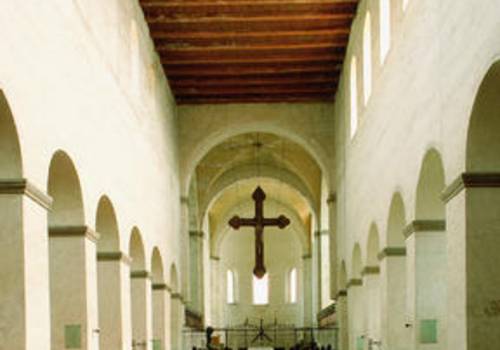Church of our lady, Halberstadt
The architecture of the church of Our Blessed Lady (1020), a four-towered Romanesque basilica, is unique in central Germany.
The architecture of this four-towered Romanesque basilica is unique in central Germany. The original building was constructed in 1005 as the church of an Augustinian monastery. Traces of this earlier structure have survived in the basement of the west towers. It took the whole of the 12th century to construct the three-nave pier basilica we see today; the newly-built eastern part was consecrated in 1146. In the 13th century, the originally flat-ceilinged choir and transept were provided with groined vaulting. There are apses at either end of the transept; the south apse is two storeys high and holds an exhibition on the history of the churchs construction. In addition to the two west towers, there are another two towers to the west of the transept. The church of Our Blessed Lady is renowned for its choir screens, which are among the most important examples of Romanesque sculpture anywhere in Germany. The coloured stucco reliefs date from about 1200. There are seven niches on the south side and seven on the north side, with figures of Mary and Christ respectively positioned centrally between six apostles. The triumphal cross which hangs in the western crossing arch was made in about 1230. It is an outstanding example of a Saxon monumental cross. St. Barbaras chapel in the corner between the southeast tower and the nave dates from about 1420. Its furnishings with the winged altar and ceiling paintings have survived almost intact. The so-called baptismal chapel was built in the southwest of the church in 1170; its vaulted ceiling is supported by an intricate ornamented column.
To the west of the church are cloisters from the 14th and 15th centuries which house an exhibition of half-timbered architectural features.
Guided tours: daily 1.30 p.m.
Service:
Sunday and public holidays: Apr Sep: 10 a.m.
May - Oct: 11 a.m.

![25 Jahre Siegel - Offi Seite [(c)Administrator]](https://www.strassederromanik.de/de/datei/anzeigen/id/79750,1050/25_jahre_siegel.png)

